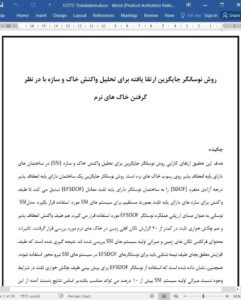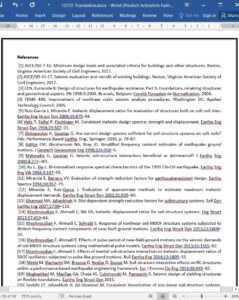Abstract
This paper aims to improve the effectiveness of the replacement oscillator approach for soil-structure interaction (SSI) analysis of flexible-base structures on soft soil deposits. The replacement oscillator approach transforms a flexible-base single-degree-of-freedom (SDOF) structure into an equivalent fixed-base SDOF (EFSDOF) oscillator so that response spectra for fixed-base structures can be used directly for SSI systems. A sway-rocking SSI model is used as a baseline for assessment of the performance of EFSDOF oscillators. Both elastic and constant-ductility response spectra are studied under 20 horizontal ground motion records on soft soil profiles. The effects of frequency content of the ground motions and initial damping of the SSI systems are investigated. It is concluded that absolute acceleration spectra, instead of pseudo-acceleration spectra, should be used for EFSDOF oscillators in force-based design of SSI systems. It is also shown that using an EFSDOF oscillator is not appropriate for predicting the constant-ductility spectra when the initial damping ratio of the SSI system exceeds 10%. Based on the results of this study, a correction factor is suggested to improve the accuracy of the replacement oscillator approach for soft soil conditions.
1. Introduction
The preliminary design of typical building structures in current seismic design codes and provisions is mainly based on elastic spectrum analysis, where the inelastic strength and displacement demands are estimated by using modification factors, such as the constant-ductility strength reduction factor Rμ (i.e. reduction in strength demand due to nonlinear hysteretic behaviour) and inelastic displacement ratio Cμ [1–3]. The spectral shapes of elastic response spectra and modification factors in most seismic design codes and provisions (e.g. [3,4]) are derived by averaging the results of response-history analyses performed on single-degree-of-freedom (SDOF) oscillators using a number of earthquake ground motions [5–7]. In engineering practice, the frequency content of a ground acceleration motion at a soft soil site is often characterized by a predominant period [8] as an influential parameter for estimating the seismic response of buildings.











